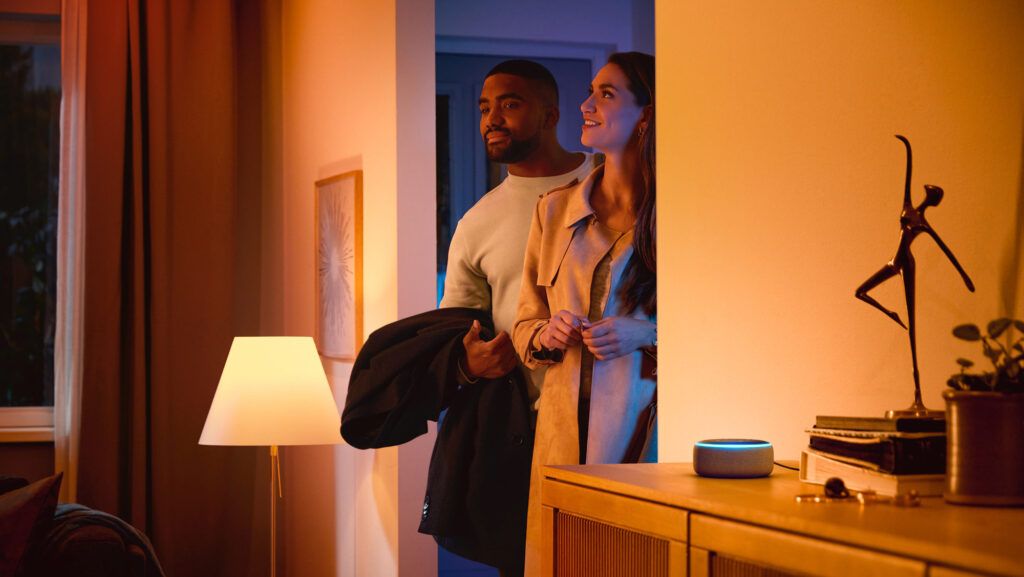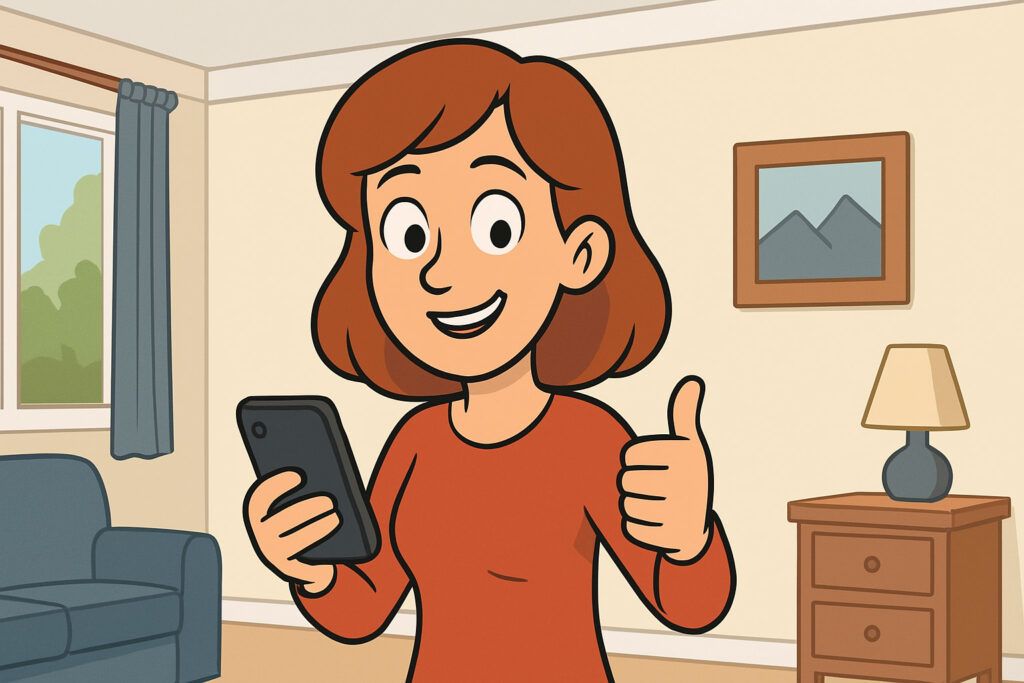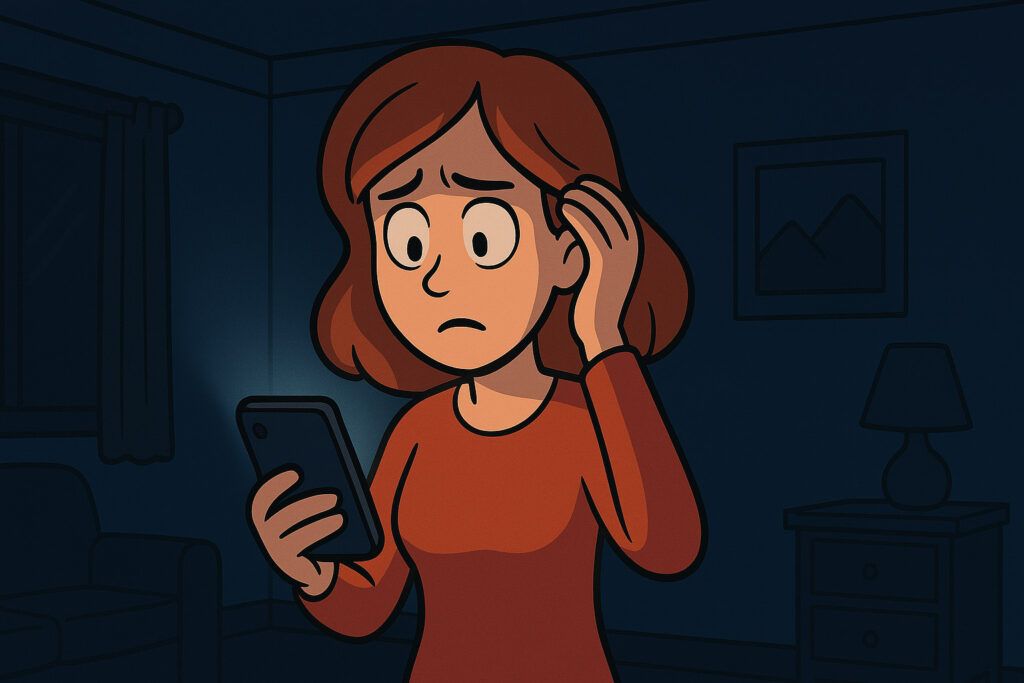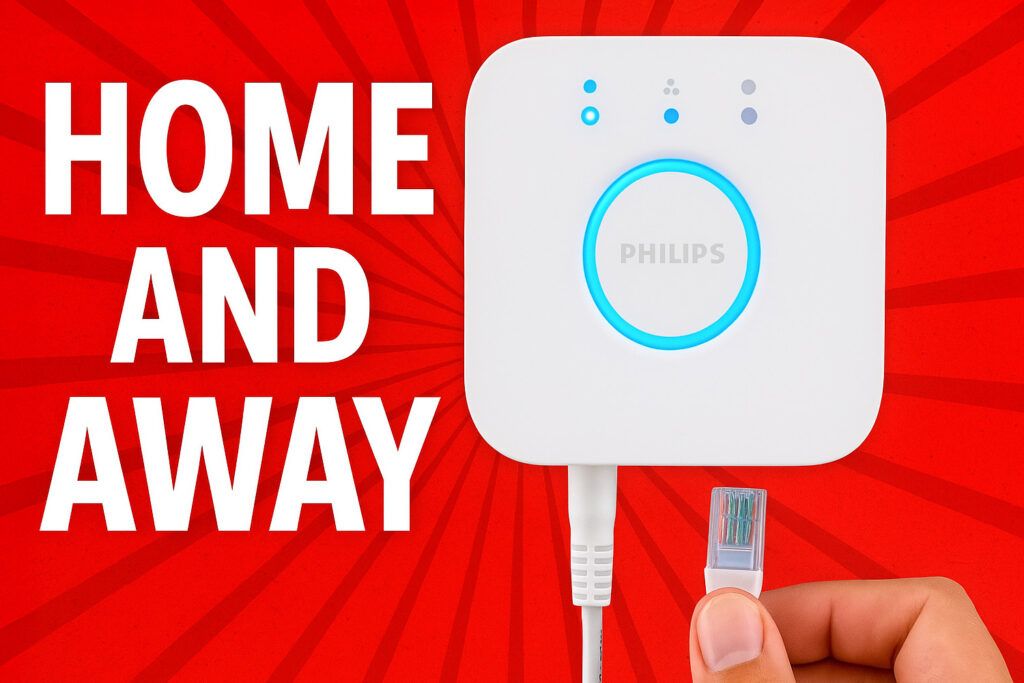Philips Hue 'Home and Away' Not Working? [FIXED]

If you’ve used Philips Hue lights for a while, you probably know how handy they can be. I’ve had mine set up for a few years now, and I like how easy it is to control everything from my phone. The lights are bright, they respond fast, and the app usually works well. That said, not everything is perfect.
One feature I wanted to love is the ‘Home and Away’ setting in the Hue app. It turns your lights on when you get home and turns them off when you leave by tracking your phone’s location. In theory, that sounds great. But in real life, it’s been kind of hit or miss. Sometimes I’d walk into my house, and the lights would stay off. I’ve talked to other Hue users who ran into the same problems. Even after updates, it still acts weird from time to time.
👉 Related reading: The Best Smart Lights for Homeowners
What Is Philips Hue ‘Home and Away’?
https://www.youtube.com/watch?v=jwCjfDBybos
The ‘Home and Away’ feature in the Philips Hue app is designed to automate your lights based on your phone’s location. When you leave your house, it can turn lights off. When you return, it can turn them back on. You can adjust the settings to fit your schedule or preferences, like having only certain rooms turn on at night.
It’s a useful feature when it works. It’s meant to take away the need to manually control your lights every time you come and go. The idea is that everything happens automatically in the background.
But even though the setup looks simple, it doesn’t always go smoothly. I’ve had plenty of times when the app didn’t recognize I had left the house or thought I was still home after I’d been gone for hours.
👉 Related reading: Best Smart Home Devices in 2025
Signs ‘Home and Away’ Is Broken
| Problem | What Happens |
|---|---|
| Lights stay on after you leave | App thinks you’re still home |
| Lights don’t turn on when you get home | App doesn’t detect your return |
| App shows wrong location | Geofencing fails |
| Feature works inconsistently | Sometimes works, sometimes doesn’t |
| Different behavior on different phones | One device may work, another may not |
| Only one phone triggers automations correctly | Multi-user setup is misconfigured |
If your lights aren’t responding the way you expect, there’s a good chance something’s off with the ‘Home and Away’ feature.
- Lights stay on after you leave
- Lights don’t turn on when you get home
- App shows wrong location
- Feature works inconsistently
- Different behavior on different phones
- Only one phone in the house triggers lights correctly
For me, the first sign was the lights staying on after I’d left the house. I checked the app, and it still thought I was home—even though I was miles away.
Other times, I’d come home and walk into a dark living room. I’d wait a few seconds, thinking the lights would kick on, but nothing happened. I had to open the app and turn them on manually, which kind of defeats the whole point. I’ve also seen times where it worked one day but not the next, with no changes to my settings.
Sometimes it even acts differently depending on which phone I’m using. I noticed that it worked better on my older Android than on my newer iPhone, which was surprising. And I’ve seen reviews from other users with the same issue—where one phone in the household works fine but the others don’t trigger the lights correctly.
These kinds of problems can be frustrating, especially when you’re relying on the feature to work automatically.
👉 Related reading: Best Smart Thermostats That Save You Money
Common Reasons It Doesn’t Work
I spent a lot of time trying to figure out why ‘Home and Away’ wasn’t working right. At first, I thought maybe it was just a bug in the app, but the more I looked into it, the more I found a few common issues. One of the biggest ones for me was location permissions. On my iPhone, the app didn’t have permission to always use my location—it was only allowed when the app was open. That completely broke the automation, since the app needs to know where you are even when you’re not using it.
| Cause | Explanation |
|---|---|
| Location access not set to “Always” | App can’t track location in the background |
| Battery optimization is enabled | Hue app goes to sleep and can’t update location |
| Wrong phone selected in app | App uses the wrong device for location tracking |
| Recent app or OS update | May reset location or battery settings |
| Multiple phones not synced | Hue needs each user to have their own account and permissions set |
Battery settings were another problem. On Android, my phone kept putting the Hue app to sleep in the background to save power. That sounds useful, but it stopped the app from checking my location in real time. Once I turned off battery optimization for Hue, it got better.
I also found that the app sometimes had the wrong device selected as the one it should track. If you use Hue with more than one phone in the house, it’s easy for the app to get confused. There’s a setting where you pick the device that controls location updates, and if it’s not set to the right one, things won’t work right.
Software updates also play a role. I’ve had the feature break after an app update or phone system update, and I had to go back in and reset some settings. It doesn’t always fix itself, which is annoying. Reinstalling the app actually helped once when nothing else worked.
If your lights aren’t responding the way they should, checking these areas is a good place to start.
👉 Related reading: Best Ring Doorbells in 2025
Using ‘Home and Away’ With More Than One Person

This is where things got more confusing for me. When it was just me using the Hue system, ‘Home and Away’ worked okay—once I fixed the settings. But once I added my partner’s phone to the app, the feature started acting weird again. Sometimes the lights would turn off while she was still home. Other times, they wouldn’t turn on when we both arrived.
What I didn’t realize at first is that each person needs to have their own Hue account and be invited to the home setup. Just sharing the app login won’t work. Both of us had to go into our own Hue apps, accept the invitation to the same home, and set up our own location access. We also had to make sure each phone had “Always” allowed for location and no battery limits.
Even with everything set up correctly, the system doesn’t always handle multiple users perfectly. Hue’s app will only trigger automations when everyone has left the house. So if one phone still shows as “home” because the app hasn’t updated, the lights won’t turn off. That caused issues for us a few times.
To get around this, I checked the status of each user’s location in the Hue app under Settings > Home & Away. If one of the phones wasn’t updating, I’d restart the app or reset the automation. It’s not ideal, but that usually got things working again.
If you live with someone else and both of you use Hue, expect to spend some extra time fine-tuning things.
👉 Related reading: Best Amazon Echo Devices in 2025
Fixes That Worked for Me

After dealing with these problems for a while, I finally sat down and went through everything one step at a time.
- Give the Hue app full location access (set to “Always”)
- Turn off battery optimization for the Hue app (or Low Power Mode on iPhone)
- Open the Hue app and check which phone is set for location tracking
- Delete the ‘Home and Away’ automation and set it up again
- Update the Hue app and restart your phone
- Reinstall the app if the problem continues
The first thing I did was double-check the location settings on my phone. I made sure the Hue app had permission to always access my location—not just when using the app. On iPhone, you can find this in the Settings app under “Location Services.” On Android, it’s usually under “App Permissions.” Once I changed that, the app started tracking my location more reliably.
Next, I looked at battery settings. On Android, I had to turn off battery optimization for the Hue app. That stopped the phone from putting the app to sleep when I wasn’t using it. On iPhone, I didn’t see the exact same setting, but turning off Low Power Mode helped a little.
Then I opened the Hue app and went into the “Automations” section. I checked which device it was using for location tracking. Mine had somehow switched to a different phone on my Hue account, so I changed it back to my main phone. That actually made a big difference.
👉 Related reading: Best Robot Vacuum for Your Home
I also deleted the ‘Home and Away’ automation and set it up again from scratch. That helped refresh everything and cleared out whatever glitch was there. I updated the Hue app, restarted my phone, and after that, it finally worked the way it was supposed to.
If none of that had worked, I probably would have uninstalled and reinstalled the app. I’ve had to do that in the past for other Hue issues, and sometimes that’s the only thing that resets everything fully.
What To Do If It STILL Doesn’t Work

Even after fixing the settings and getting both phones set up the right way, there were still times when ‘Home and Away’ didn’t behave how I expected. I got tired of walking into a dark house or wondering if the lights were actually off after I left. That’s when I started looking at other ways to get the same result without relying so much on the location feature.
One thing that helped was setting up time-based automations instead. For example, I made a schedule that turns the lights off every weekday at 8:30 a.m. and turns them on again around sunset. It’s not as smart as geofencing, but it’s way more reliable. At least I know the lights will turn off in the morning no matter what.
I also started using Google Home routines to back things up. If you’re using Alexa or Apple Home, you can do something similar. These platforms often handle location tracking better than the Hue app, especially if you already use them for other smart home stuff.
👉 Related reading: Best Smart Speakers in 2025
Honestly, I think the idea behind ‘Home and Away’ is great—it just doesn’t always deliver. After spending so much time tweaking settings and trying to get it working, I’ve learned to keep a backup plan in place. If you’ve been having issues with it, you’re definitely not alone. And if it ever starts acting up again, at least now I know what to check first.
Examples of Time-Based Automations
| Automation Type | Schedule Example | Benefit |
|---|---|---|
| Morning lights off | Weekdays at 8:30 a.m. | Reliable shutoff before leaving |
| Evening lights on | Sunset or 6:30 p.m. | Consistent evening lighting |
| Weekend schedule | Later on/off times | Matches weekend routines |
| Backup to geofencing | Runs even if location fails | Always turns lights on/off |
Final Thoughts

I still like using Philips Hue lights, and I don’t plan on switching to anything else anytime soon. When ‘Home and Away’ works, it’s great—but admittedly, getting it to that point can take more effort than it should. If you’re just getting started with Philips Hue, I suggest testing it for a few days, and watch how your smart lights respond.
Check your phone settings, double-check the device it’s using for location, and don’t forget to look at battery and background settings. You can always schedule automations and routines through Google or Alexa instead. I still keep ‘Home and Away’ turned on, but I’ve set up a few backups just in case it decides to stop working again.
Hopefully some of this helped you figure out where the issue is in your own setup. Philips Hue is great for smart home automation when everything is working as it should.
Continue reading: